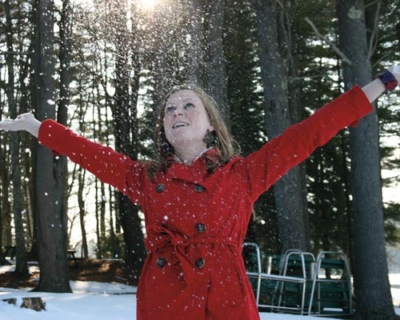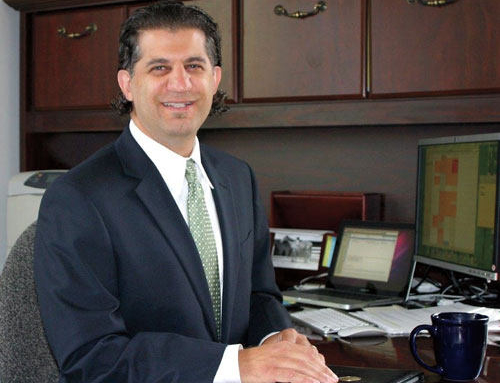 Elementary education alumna and Class of 2013 Valedictorian Kathryn Bois is continuing her values-centered education at Boston College’s Urban Catholic Teachers Corps, where she’s teaching seventh- and eighth-grade language arts at St. Mary of the Hills in Milton, Mass.
Elementary education alumna and Class of 2013 Valedictorian Kathryn Bois is continuing her values-centered education at Boston College’s Urban Catholic Teachers Corps, where she’s teaching seventh- and eighth-grade language arts at St. Mary of the Hills in Milton, Mass.
Why is middle school a good place for you as a teacher?
It’s certainly a challenging placement because of the academic rigor and social pressures that middle school students face. But when teachers expect nothing but the best from their students and constantly reassure and believe in them, great things can happen. Being in a position where I can make a difference is what I find most inspiring about teaching middle school students.
What role does a Catholic school education play in the development of high-achieving students?
Rooted in faith, Catholic schools really educate their students on values such as the ones Saint Joseph’s College upholds: faith, excellence, integrity, community, respect, compassion and justice. With high moral standards, Catholic schools also uphold high academic standards. Students must maintain a certain level of academic achievement to be a student at a private school.
Catholic schools also foster a strong sense of community and teach what it means to be good students and global citizens. Teachers not only push their students to become excellent scholars in the classroom but also to be responsible and caring citizens. The combination of teachings in faith, humanitarianism and academics all contribute to the development of high-achieving students.
Are there areas of the education process that could be improved?
I would like to see teachers have more time to actually teach. The move toward standards-based curriculum and assessment certainly has advantages, but it comes with many disadvantages as well. One of the biggest disadvantages, in my opinion, is that the emphasis becomes less on learning and more on performing. Teachers lose touch with their own creative teaching personality that they could bring to enrich their students’ learning environment.
Another issue important to me is poverty in education. During my senior research class at Saint Joseph’s, I studied the effects of socioeconomic status, environmental factors and parent involvement on student achievement. It is very important to me that all students, including those who come from poverty, are able to access quality education and multiple opportunities to succeed.
How did Saint Joseph’s academic and community service opportunities develop you as a student?
I think one of the strongest components of a Catholic education is the emphasis on educating the whole person, not just in an academic sense. Learning can and does take place outside of the classroom environment, and that is one of the best things about being involved in service. Part of the Mercy tradition at Saint Joseph’s is giving back to others. This effort is campus-wide; it’s not just a single organization on campus that participates. No matter where you are in the world or whom you are helping, you always learn something new and leave as a different person.
Service was always a big part of my life, but until Saint Joseph’s College I was never directly involved with helping other parts of the world in need. My service experiences at Saint Joseph’s, especially in Guatemala and Haiti, were very humbling and life changing.
What lesson from Saint Joseph’s stays with you to this day?
Before my service trips abroad, I was in Dr. Bridge’s Introduction to the Judeo-Christian Tradition course. Part of his course was a 10-hour community service project that would demonstrate our selfless love to someone or a group of people in our community, whether it was our College or a global community. For some reason still unknown to me to this day, I decided I wanted to raise money for the College’s upcoming trip to Guatemala, a trip that I had no intention of making.
I created a presentation about Guatemala and showed it to a classroom of fourth-graders that I was working with for an internship. Before I knew it, the students were eager to help, and we decided to hold a change drive. In the end, the students raised about $50, which goes a very long way in a developing country such as Guatemala. The class’s contribution was able to provide an elderly woman with plumbing in her house, a rarity in the region of Guatemala that Saint Joseph’s serves.
This community project, this small act of kindness, was really what created the spark for me to get involved. If it hadn’t been for Dr. Bridge’s enthusiasm for serving others, I can’t say that I would be who I am today. Though I started out raising money, I eventually traveled with a team to Guatemala and then to Haiti. His class really opened my eyes to the good feelings you get when you give back to others or become a part of something that is bigger than yourself.
When students recognize that small acts of kindness contribute to a greater good, they feel great about what they are able to accomplish. I hope that I can have that sort of impact on my future students.
